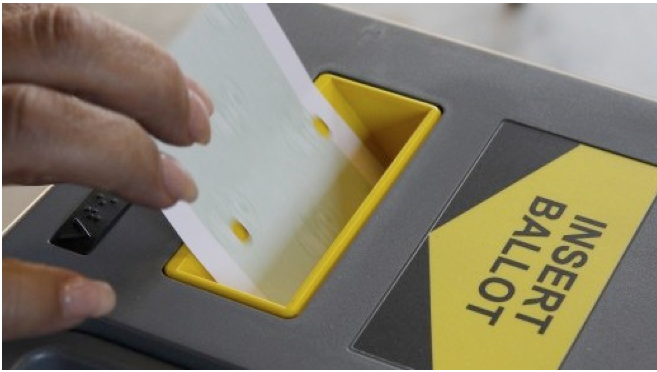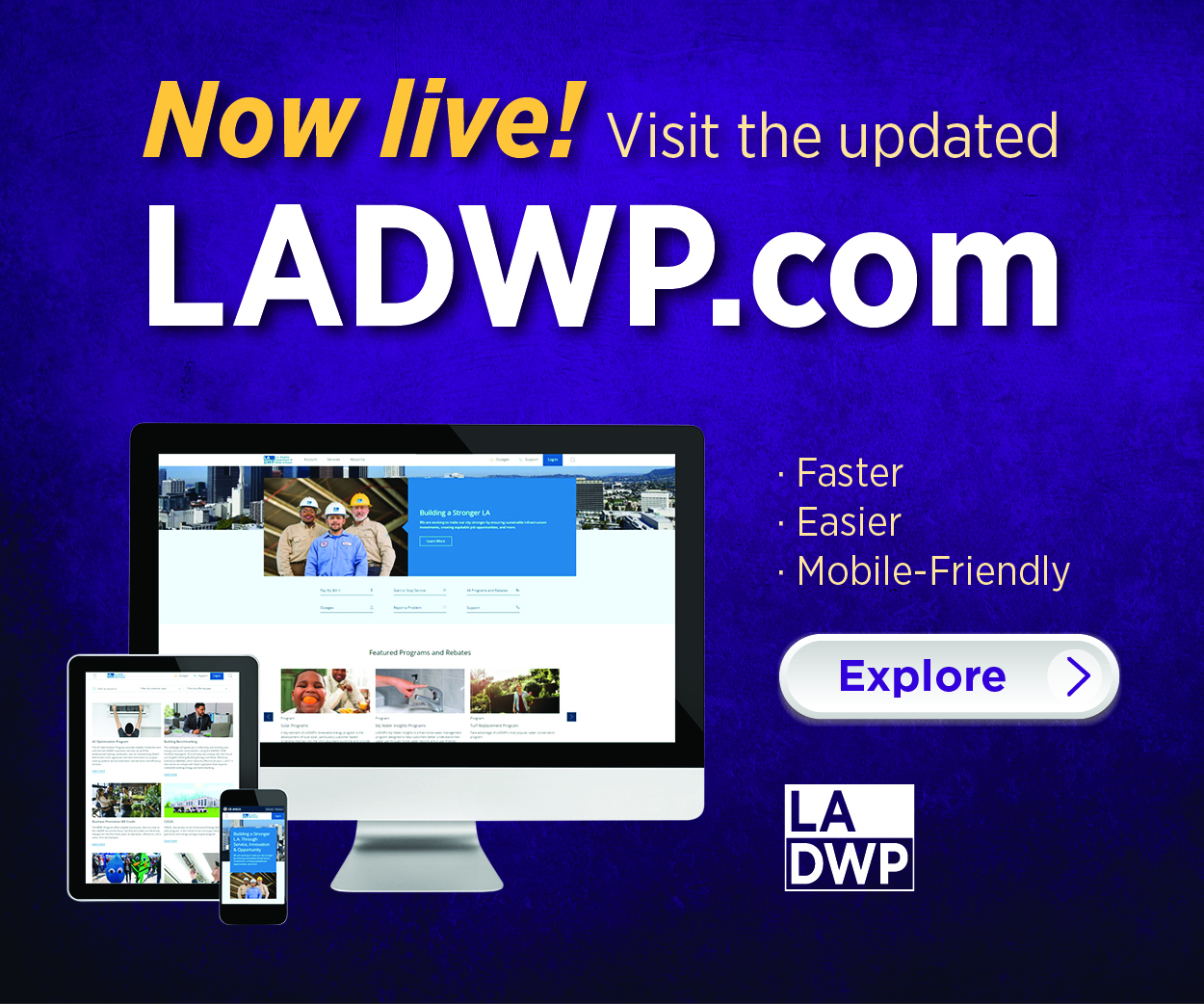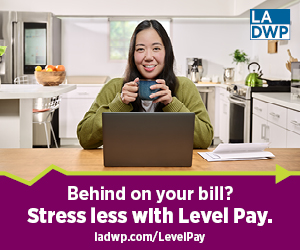RANTZ & RAVEZ--While you are considering the Presidential race between Hillary Clinton and Donald Trump, don’t forget the many important issues that will impact your wallet on a local level here in Los Angeles City and County.
The time has come to end the discussions and torrent of TV Ads and piles of campaign literature and all political mail and select the people we want to be our next President and Vice President; Members of the United States Senate and Congress as well as our California State Senators and Assembly members. Then there are the other items on the ballot. Like the Four Judicial Offices (who knows anything about any of them) and 17 State Measures, 2 County Measures, 1 Community College Measure and finally the 4 Los Angeles City Measures.
I have reviewed all the items including the 223 page Official Voter Information Guide from my friend Alex Padilla, the California Secretary of State. I have my selection of endorsements. Since I am concerned with electing people that will work for all Republicans and Democrats and Independents, my endorsements cross-traditional Red and Blue party lines. In the end, we are all American and deserve to have elected officials that represent and care for all of us. I have not received any consideration or compensation for any of the selections. I truly believe that our votes should be for the betterment of our city, county, state and America.
President and Vice President……Your Choice of Hilary Clinton / Tim Kaine or Donald Trump / Michael Pence. Since there has been so much controversy and discussion about the Presidential Office, I leave that one up to you to select. I know who I am voting for and believe that after all the research I have done I am selecting the person I believe can bring America to a new arena of Progress and Hope. I am reluctant to use the terms Hope and Change since I don’t believe that has really worked for America during the past 8 years. Is America Great or not so Great? I believe that America is the land of opportunity and promise for those that work hard and pursue their dreams. I pray that all parties in America can unite for the good of ALL people.
Now for the United States Senator from California. This is a critical position for many reasons. While President Obama is doing TV Commercials for California Attorney General Kamala Harris, that tells me something about her connections with Washington D.C. On the other hand, the other candidate is current Congresswoman Loretta Sanchez. Both of these candidates are Democrats and my bet is on Harris. In examining the track record of both candidates, Harris has accomplished a number of significant programs while Sanchez does not have any real claim to fame for all her years in Congress.
As for your State Senator and Member of the State Assembly, each district has different candidates. In my district I am supporting former Reserve LAPD Officer and business owner Steve Fazio. My selection for Assemblyman is Matt Dababneh. I know both of these candidates on a personal level and can attest to their dedication to the people of their respective districts and the people of California.
The Judicial candidates are usually very confusing to most voters. Since voters are not generally involved in court matters, your knowledge of the Judicial candidates is very limited. With the Slates of Candidates that are mailed to your homes, you can read a few words and not know the true story about the candidate. I have done my homework on the Judicial candidates running for offices 11, 42, 84 and 158. I know two of the candidates personally and have done research on the other two. I can attest to their qualifications and ability to be honorable Judges of the Superior Court.
Office 11. I am voting for Debra R. Archuleta. Debra is currently a Deputy District Attorney and well qualified for the position of Judge.
Office 42. Efrain Matthew Aceves is my selection for this office.
Office 84. I am going with Susan Jung Townsend. Susan is also a Deputy District Attorney. She is most qualified for the position of Judge.
Office 158. Kim L. Nguyen. Kim is a Deputy Attorney General and my pick for this Judicial office.
Now we have the State Measures ...
- NO. School Bonds. Funding for K-12 and Community College Facilities. This measure will last for 35 years and cost us approximately $17.6 Billion Dollars.
- NO. Medi-Cal Hospital Fee Program. Uncertain Fiscal Impact.
- YES. Revenue Bonds. Requires approval from voters if Bond exceeds $2 Billion.
- NO. Prohibits Legislature from passing any bill unless published on the Internet for 72 hours before the vote. Note…We elect our state representatives to do a job for us. This measure will cost millions to maintain and is not necessary.
- NO. Extends by another 12 Years a former temporary Tax extension to fund Education and Healthcare initiative. This temporary tax was enacted in 2012 and set to expire in 2019. This measure will extend the tax until 2030. This is all about truth in government. TEMPORARY means TEMPORARY!
- YES. Cigarette Tax. If you smoke, I am sure you are opposed to this additional tax. If you are a non-smoker like me, you most likely will vote YES.
- NO. Criminal Sentences, Parole and Juvenile Criminal Proceedings and Sentencing. This measure will continue the release of Criminals in our Penal System. This will lead to more crime and a negative impact on society.
- Yes. English Language Proficiency will be a requirement in schools.
- NO. Corporations and political spending and Federal Constitutional Protections.
- Yes. Adult Films, Condoms and Health Requirements.
- NO. State Prescription Drug Purchases. Pricing Standards.
- NO. Death Penalty. Repeals the Death Penalty. With all the murders of civilians and police officers, we need to continue the enforcement of the Death Penalty.
- Yes. Firearms and Ammo Sales. This measure will require a background check to purchase ammo. Additional Firearms restrictions are contained in this measure.
- Up to you…Marijuana for recreational use. If you like to get high, you will vote yes. There are some serious consequences with the legalization of Marijuana. DUI Marijuana and related public safety matters.
- Yes. Carryout Bags and Charges. When bags are sold in stores, the money will be required to be used for environmental projects.
- Yes. Death Penalty Procedures. Streamlines the Death Penalty procedures to avoid the current years long delays. Prison savings will amount to tens of millions of dollars annually.
- NO. Unless there is a local ordinance, Plastic Bags will be provided free of charge to consumers.
County Measures
A. NO. This measure will provide another tax increase on your home and business property. The measure calls for a 1.5 cents to be levied annually per square foot of improved property in all of Los Angeles County.
M. NO. This measure will increase the sales tax in all of Los Angeles County to at least 9.5 cents on all your purchases forever. There is no sunset clause in this measure. Some cities will be over 10 cents on all purchases. This measure is also being pushed to create over 465,000 jobs. How many of those jobs will be administrative?
While we have massive traffic congestion in Los Angeles County, this is not the answer. Near $10 BILLION DOLLARS was sent on the 405-freeway improvement. Not much improvement to date. Combine this tax increase with the other ones being pushed for the November 8 election and your spendable cash will all be gone soon.
Many of the proposed projects will not be completed until 40 years from now! While driverless cars are being developed along with battery operation vehicles, there is no vision in the future for this proposal.
School
CC. NO. Los Angeles Community College District.
The Community College District received increased funding a few years ago. Major improvements were completed and continue to be made at Community College Campuses. Valley College is still experiencing major construction along with many of the other campuses. This bond measure of $3,300,000,000 is not necessary.
Los Angeles City
HHH. NO. This is another tax increase for Los Angeles residents. It calls for a $1.2 BILLION Dollar bond measure that will result in an increase in your property taxes. The funds are expected to be used for the Homeless population. Many homeless don’t want to reside in apartments or other structures.
JJJ. NO. This is the Affordable Housing and Labor Standards related to city planning.
While this initiative may sound good, it will not bring about any significant affordable housing to Los Angeles. It will increase the cost of any housing that is done in Los Angeles.
RRR. NO. This is just another scam on those of us that pay for water and electricity with the DWP. The number of commissioners will increase to 7 members that will be PAID for their services. When the Rate Payer Advocate was established a few years ago, that was designed to improve the services and operations at the DWP. In the end, the Rate Payer Advocate cost us all more money with little positive results. There is also a discussion about moving from a two-month bill to a monthly bill for DWP services. That is expected to cost $19,000,000 to begin the change and a recurring cost of $4,000,000 annually. RRR is a bad idea and should be defeated.
SSS. Yes. This measure will permit newly hired Los Angeles International Airport Police Officers to join the City of Los Angeles Fire and Police Pension System. It will also permit current LAX Police Officers to join the Fire and Police Pension at their own expense.
There you have it. I hope this assists you in understanding of the many items on the November 8, 2016 Ballot.
(Dennis P. Zine is a 33-year member of the Los Angeles Police Department and former Vice-Chairman of the Elected Los Angeles City Charter Reform Commission, a 12-year member of the Los Angeles City Council and a current LAPD Reserve Officer who serves as a member of the Fugitive Warrant Detail assigned out of Gang and Narcotics Division. Disclosure: Zine was a candidate for City Controller last city election. He writes RantZ & RaveZ for CityWatch. You can contact him at [email protected]. Mr. Zine’s views are his own and do not reflect the views of CityWatch.)
-cw
 And earlier in the summer the group Defend Boyle Heights demanded that "all art galleries in Boyle Heights ... leave immediately." Anti-gentrification activists say the galleries, new restaurants and new housing serve as tools to displace Boyle Heights residents who, in a market where median rents exceed median income, will have nowhere else to go.
And earlier in the summer the group Defend Boyle Heights demanded that "all art galleries in Boyle Heights ... leave immediately." Anti-gentrification activists say the galleries, new restaurants and new housing serve as tools to displace Boyle Heights residents who, in a market where median rents exceed median income, will have nowhere else to go. 






 It looked like the Cubs of old had returned. And then they had to go and destroy a tradition older than the 20th century (which, after all, was only given 100 years), a tradition that went back to monarchial rule over Europe and Asia, wooden airplanes, Giacomo Puccini, and Billy Goat's curse. All lost to history now. About all we've got left is Halley's Comet, and it's not due till the 2060s.
It looked like the Cubs of old had returned. And then they had to go and destroy a tradition older than the 20th century (which, after all, was only given 100 years), a tradition that went back to monarchial rule over Europe and Asia, wooden airplanes, Giacomo Puccini, and Billy Goat's curse. All lost to history now. About all we've got left is Halley's Comet, and it's not due till the 2060s. 



